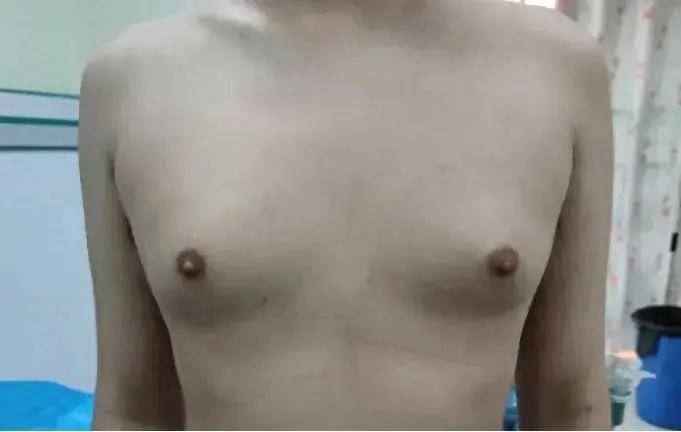With the arrival of the summer vacation, an increasing number of male patients are being seen at the Breast Department Outpatient Clinic of Hunan Provincial Hospital of Traditional Chinese Medicine. The most frequently asked question is: Is male breast development really a disease? How should it be treated? Do you also have such concerns?
Today, experts from the Breast Department of Hunan Provincial Hospital of Traditional Chinese Medicine will provide detailed answers to all your questions about male breast development!
The causes of gynecomastia in men are divided into physiological and pathological.
Pathological male breast development is due to organ diseases such as the testes, adrenal glands, liver, or thyroid, causing an increase in estrogen levels or inadequate secretion of testosterone, which requires active treatment of the primary organ disease.
Physiological male breast development occurs because of a relative decrease in testosterone levels or a relative increase in estrogen levels in the male body, without any other organ diseases. The vast majority of male breast development during adolescence belongs to physiological male breast development.
Mild physiological male breast development does not require drug or surgical treatment; ensure adequate sleep, avoid overeating and overdrinking, maintain a regular routine, have a healthy diet, engage in regular physical exercise, and maintain good emotions.
For moderate to severe male breast development that affects learning, work, and life, or even causes mental abnormalities, surgical treatment may be considered.
Minimally invasive rotational cutting: Short surgical time, quick recovery. Incision is approximately 0.5cm, local anesthesia, no drainage tube, no urinary catheter, no suture removal. The symmetry and aesthetics of the breasts are maintained, resulting in high patient satisfaction.
The Breast Department of Hunan Provincial Hospital of Traditional Chinese Medicine has already completed over 30 cases of minimally invasive rotational cutting for male breast development, receiving unanimous praise from patients and their families.
▲ Before and after comparison images
Laparoscopic-assisted gland resection: Suitable for male breast development with a wide range of lesions, with a discreet incision approximately 2-3cm long. Satisfactory results have been achieved, with patients being discharged 4 days post-surgery. Over 20 cases have been successfully completed.
▲ Before and after comparison images
Traditional surgery: Periareolar incision, suitable for cases with a small extent of lesions, limited by the size of the areola. Postoperative nipple ischemic necrosis may occur, affecting aesthetics.
Source: Breast Department, Hunan Provincial Hospital of Traditional Chinese Medicine
Follow @Hunan Medical Chat for more health science information!
(Edited by YH)


